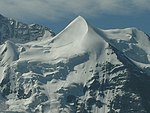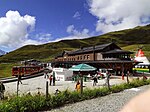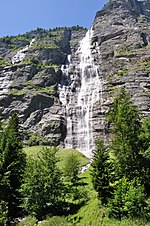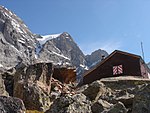Schwarzmönch
Canton of Bern mountain stubsMountains of SwitzerlandMountains of the AlpsMountains of the canton of BernTwo-thousanders of Switzerland

The Schwarzmönch (German for "black monk") (2,649 m) is a mountain of the Bernese Alps, overlooking Lauterbrunnen in the Bernese Oberland. It forms a huge buttress on the north-west side of the Jungfrau, to which it is connected by the ridge named Ufem Schwarzen Grat. East the summit is located the Silberhorn Hut.
Excerpt from the Wikipedia article Schwarzmönch (License: CC BY-SA 3.0, Authors, Images).Schwarzmönch
Geographical coordinates (GPS) Address Nearby Places Show on map
Geographical coordinates (GPS)
| Latitude | Longitude |
|---|---|
| N 46.551722222222 ° | E 7.9266111111111 ° |
Address
Gemsibeden
3824
Bern, Switzerland
Open on Google Maps











